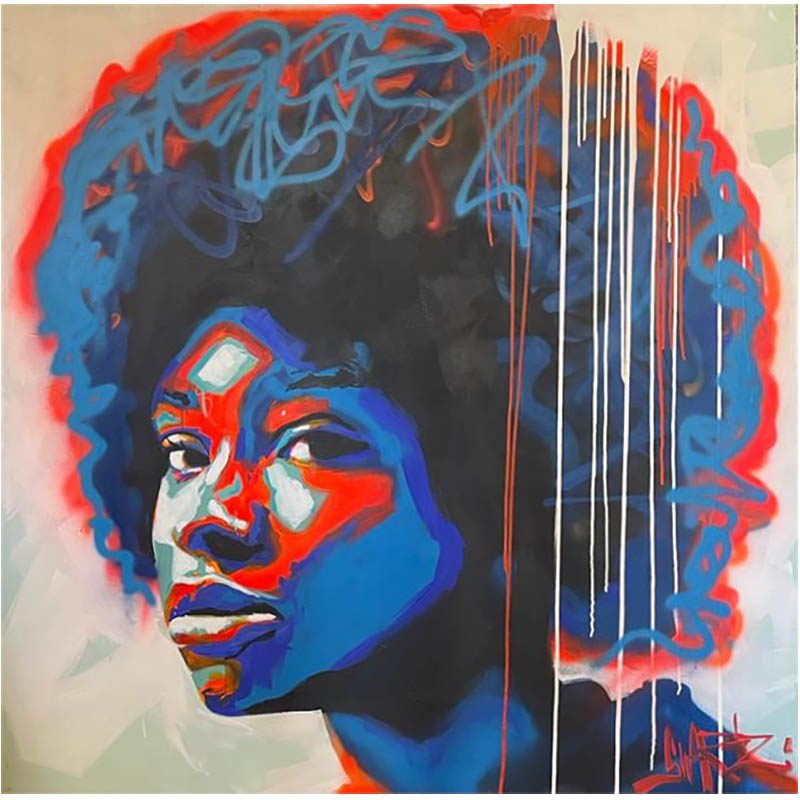Art has always been a universal language, transcending borders and connecting people from different cultures and backgrounds. The diversity of global art is a testament to the richness and beauty of human creativity. In this blog post, we’ll embark on a journey to explore the diverse artistic traditions that exist around on the African continent.
Art serves as a powerful means of cultural expression, reflecting the values, beliefs, and experiences of different societies. Each culture has its unique artistic traditions that have been passed down through generations.
Exploring Different Artistic Styles on the African Continent
When hen exploring different artistic styles encountered on the African continent, including South Africa, we encounter a wide array of diverse and vibrant art forms. Here are a few examples:
- Ndebele Art: Ndebele art originates from the Ndebele people of South Africa and Zimbabwe. It is characterised by bold geometric patterns and bright colours. Ndebele art is often found in the form of mural paintings on the exterior walls of homes, known as “hut art,” as well as in beadwork and crafts.
- African Mask Art: Masks hold significant cultural and spiritual importance in many African societies. African mask art varies across regions and tribes, with each mask carrying symbolic meanings and serving different purposes, such as ancestral worship, rituals, or storytelling. Masks can be intricately carved from wood, adorned with beads or shells, and feature diverse designs and motifs.
- Kente Cloth: Originating from Ghana, Kente cloth is a vibrant and colorful fabric traditionally woven by the Ashanti people. It is characterized by intricate geometric patterns and bright, bold colors. Kente cloth is often worn on special occasions and holds cultural and social significance.
- San Rock Art: The San people, also known as Bushmen, have a rich artistic tradition dating back thousands of years. Their rock art can be found in caves and rocky outcrops throughout Southern Africa, including South Africa. San rock art depicts scenes from daily life, spiritual beliefs, and hunting rituals using pigments made from natural materials.
- Wire Art: Wire art has gained prominence in South Africa, particularly in the townships, as a form of creative expression and income generation. Artists create intricate sculptures, baskets, and jewelry using wire, transforming this humble material into captivating works of art.
- Makonde Sculpture: Originating from the Makonde people of Tanzania and Mozambique, Makonde sculpture is renowned for its intricate and detailed wood carvings. The sculptures often depict human figures, emphasizing the human form and expressions.
- Contemporary South African Art: South Africa’s contemporary art scene is diverse and dynamic, reflecting the country’s complex history and cultural diversity. Artists explore various mediums, including painting, sculpture, installation, and performance art, to address social, political, and identity-related issues.
These are just a few examples of the artistic styles encountered on the African continent. Each art form carries its unique cultural significance, reflecting the rich heritage and creativity of the diverse African cultures.
Art as a Bridge Between Cultures
Art has the remarkable ability to foster understanding and create connections between cultures. Exhibitions, art festivals, and collaborations between artists from different parts of the world provide platforms for cultural exchange and dialogue. Artists often draw inspiration from different cultures, blending elements from various artistic traditions to create something truly unique and thought-provoking.
Celebrating Diversity and Unity
By embracing the diversity of global art, we celebrate the beauty of cultural differences and promote unity through shared appreciation. It is through experiencing the art of others that we gain a deeper understanding of different cultures, fostering respect and empathy.
In a Nutshell
Art across borders is a testament to the boundless creativity of humankind. From ancient cave paintings to contemporary installations, each culture and society has contributed to the rich tapestry of global art. By exploring and appreciating diverse artistic traditions, we embark on a journey that broadens our horizons, connects us to our shared humanity, and reminds us of the power of art to transcend boundaries and create a more inclusive world.


